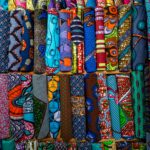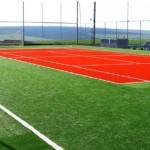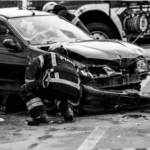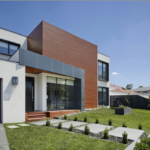“My work results from dynamic interactions between personal reflections on human nature, to meet and see the world as it is, and the multiple perspectives of my own gaze. The attempts to visually translate these specific configurations of subject, time, and place, are usually photographic, but also sometimes integrate video, design or additional installations.
The themes addressed in my works stem directly from my life experience as a female artist living and working between cultures, and yet the aim is to show how a single person’s ‘double vision’ can produce images that possess much wider social effects by collapsing racial, cultural and religious borders. In other words, the images, which are seemingly autobiographical in nature, move beyond mere autobiography.
I am also investigating mechanisms at play when learning and acquiring knowledge, and the different shapes that this knowledge takes on as it is transferred from one generation to another. Balancing playful humor, re-appropriation and respectful homage; I always ask questions through images. The Islamic counterpart to these questions and cultural distinctions often make for interesting results as it leads to more discussions/contemplation about identity through faith.
My ultimate aim is to sculpt a finer appreciation of the Islamic culture by shifting the focus from political issues to a poetic celebration of the faith’s foundations. I hope my work is always visually intricate in the subtleties within its voice. ”
What kind of response have you received about your work from within the Muslim community?
Mainly positive, thankfully. At some point in my career I got nervous about using Islamic themes in my work because I thought I wouldn’t do them justice, but in the end I realized that I was accumulating knowledge with each piece I worked on. I often read sayings of our Prophet and get inspired to create an image exploring the theme addressed on one of these hadith. It’s a learning experience for me as much as it is for my audience. Also, my work is pretty positive; it celebrates love, spirituality and lightheartedness and so I don’t usually receive negative feedback.
“…no person was right or wrong; there is just forgiveness and compassion devoid of any pride or anger.”
In regards to “‘I’m Sorry / I forgive You,” what questions were you asking that led you to create this piece?
My main inspiration in this piece were my parents and their marriage. I wanted to celebrate their union and commitment to each other. Seeing an elderly Muslim couple embrace and kiss was something I wanted to emphasize in this piece because I wanted to show the viewer the immense love they have for each other and love more generally, especially as it counters media portrayals of Muslims. My parents taught me a lot about commitment and this is why, in this day and age, I haven’t yet found love myself, I think. I come with an intensity and devotion that no one is really ready for these days.
I also wanted to create a scenario in which no person was right or wrong; there is just forgiveness and compassion devoid of any pride or anger. A very hard reality to live up to, but possible, I think, if there is enough love, real love.
What is the significance of the patterns used in “I’m Sorry / I Forgive You?”
I wanted to replicate the patterns found on mosque walls. Their aim is simply to beautify as much as it is to stress the monumentality of the powerful act of compassion shown, thereby relating the ornamentation found in places of worship to the best of human behavior. There is no color because, aesthetically, I wanted to keep the piece modern looking and light.
I must admit, I thought “I’m Sorry / I Forgive You” was my favorite, mainly because that is the piece that first reeled me into you work. However, it seems that Route 1, Route 5 and Route 6 have collectively won that role. It’s messages are apparent. Prayer as a vehicle for getting closer to Him. How did these pieces come to fruition?
These pieces were inspired by the car culture in California, actually. I spent a few summers in the Bay Area doing art residencies at the Kala Art Institute in Berkeley and came up with this series. They are a lighthearted take on the body and treating it as your vehicle on this journey we call life.
“…my work… it celebrates love, spirituality and lightheartedness…”
What are you currently working on?
I am currently researching Amazigh (Berber) jewelry in juxtaposition with traditional Libyan Arab jewelry. I want to bring together the two cultures and identities they represent to underline their similarities rather than their differences.
If you could collaborate with any other artist, who would it be?
I probably wouldn’t want to collaborate with any other artist more than I would like to work with a writer or scholar. Writing is not my best medium and I would like to improve this in order to better articulate the concepts and ideas underwriting my work. I’d like to research and write about the subjects I explore in a more in depth way so as to present text together with the visual.
“I want to bring together the two cultures… to underline their similarities rather than
their differences.”







